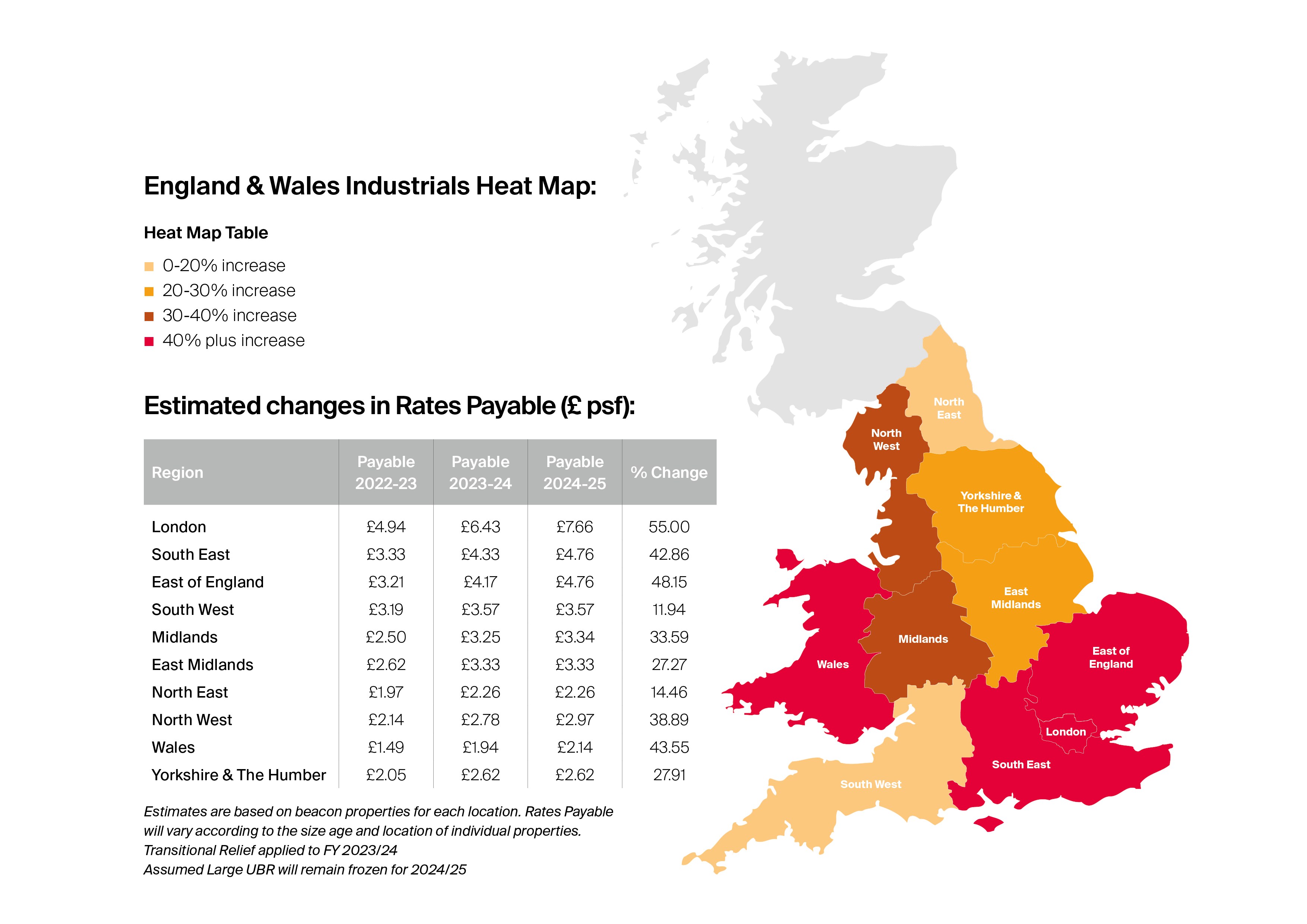2023 Rating Revaluation: How will you be impacted?
The next business rates revaluation comes into effect on 1st April 2023. It will result in significant changes in rates payable on commercial properties across England, Wales and Scotland.
It is six years since the last revaluation took place.
For England and Wales, the revaluation is based on rental values as at 1st April 2021 when the markets were subject to significant turbulence. For Scotland, the revaluation is based on rental values as at 1st April 2022.
The aim of a revaluation is to redistribute the tax base, to reflect changes in rental values.
If you are concerned or just interested in finding out how the rating revaluation will impact you – get in touch with our expert, Joanne Corney for a no-obligation chat.
Call Joanne today - 0191 221 2211 or email:joanne.corney@knightfrank.com
England and Wales Industrials Heat Map
In order to illustrate the impact on the industrial sector, we have compiled a ‘heat map’ of 10 regions (within England and Wales). The rates payable for 2022-23 have been compared to the rates payable following the revaluation in 2023-24 and 2024/25.
Key points to consider
- Average Increase: 34% (all sub-markets)
- Biggest increase: 55% London
- The increases are underpinned by the strong rental growth in the industrial sector

How Knight Frank can help you
As one of the leading specialist teams in this sector, we offer a full rates management service which will ensure that this costly overhead is mitigated at every stage.
What has caused these changes?
The average increase in rates payable has primarily been driven by accelerating rental growth over the past 6 years.
Over the last few years, growth of the e-commerce market is seen as a major driver of demand for warehousing space.
Due to the impact of the pandemic, retailers and distribution firms have sought to expand their online and home delivery capacity to capture a share of the growing online market. High levels of demand have showed no signs of abating, occupiers are increasingly looking past the immediate effect of the pandemic and are planning their supply chains and distribution and warehousing requirements for the longer term.
How are Business Rates calculated?
Business rates are calculated by multiplying the ‘rateable value’ of a property by the uniform business rate (UBR). The ‘rateable value’ is the Valuation Office’s estimate of a property’s market rent at a set valuation date.
Do you have a property in the North East and need some help with Business Rates?
Our Business Rates expert in the North East region is Joanne Corney.

Business rates represent one of the largest overheads for businesses and substantially impact on profitability.
Jo has an enviable reputation for saving businesses significant amounts of money.
She works with a wide range of businesses and organisations, large and small, across all sectors to determine if their properties have been correctly valued for business rates and, if not, she negotiates reductions.
What we do:
In simple terms, we use our experience and knowledge of the rating system to mitigate your rate liabilities. The areas of work are identified as follows:
Challenge and appeal
Our rating experts can advise if there are grounds to challenge your rateable value and guide you through the complex appeal procedures.
Rates payment and management
We provide a full service for the payment and management of your rates for large or small portfolios.
Empty rates mitigation
In the event you are vacating a property or taking a phased occupation, we can help to ensure you benefit from the maximum amount of relief. In some instances, we can mitigate your liability by securing successive periods of relief.
Disturbance refunds
If your business is being affected by a nearby development, we can help you apply for rates relief and lodge appeals citing a material change in circumstance. The reduction will be applied for the period of the disturbance.
Rate audit
We can review all the historic payments back to 1990 to check your rate demands have been correctly calculated and claim any overpaid refunds.